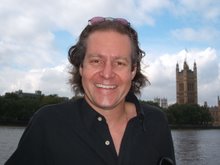Cutaways
 In 1999 our TV commercial business was hamstrung by a Screen Actors Guild strike. Looking for work, we were offered the opportunity to make a promotional film for The Chase House, a Chicago area not-for-profit, which worked in the inner city and helped families in need. The client hammered out a rough script and it was pretty much what one would expect of a typical fund-raising promotional video, people talking about how great they are and how much they help the communities they served. All of which is very nice, but painfully dull. When we looked at the script it was probably 75 percent talking head interview, 15 percent graphical statistics and maybe 10 percent moving pictures. To us this was all backwards and we accepted the job only if we could make some changes to their script.
In 1999 our TV commercial business was hamstrung by a Screen Actors Guild strike. Looking for work, we were offered the opportunity to make a promotional film for The Chase House, a Chicago area not-for-profit, which worked in the inner city and helped families in need. The client hammered out a rough script and it was pretty much what one would expect of a typical fund-raising promotional video, people talking about how great they are and how much they help the communities they served. All of which is very nice, but painfully dull. When we looked at the script it was probably 75 percent talking head interview, 15 percent graphical statistics and maybe 10 percent moving pictures. To us this was all backwards and we accepted the job only if we could make some changes to their script.
We decided to shoot this promotional film as a pure documentary. We would show the good works they did, loose the statistics completely and tell the story with pictures. Our interview subjects would push the narrative along with the answers to our questions. Ideally, we hoped to not even use a voice over person, though it turned out there was too much historical information and hard facts that needed to be presented concisely to do that. The result is what we call an Infomentary- part informational, part documentary and NO part “industrial” or “corporate” film. Our goal was to make the film interesting to watch, believing, if we could get viewers hooked on the images, it would help open up their checkbooks. Sure enough it did. Recently we showed the film to a perspective new client, and years later it holds up.
The only reason we could make the film in this style was that we shot lots, LOTS of cutaway footage. Cutaways are those scenes (or even still pictures) that you use to cut away from a subject. In film you often cut away from an interview subject to condense a story or to make the subject sound better. Recently we were editing and by using a cutaway were able to change someone from speaking in the present tense, to speaking in the past tense by substituting the word “was” for the word “is.” We were only able to do this because we had images to cutaway to.
One of the scenes in the film mentioned above was shot at an HIV/AIDS respite facility. Located in a church on Chicago’s west side, a minimal staff ran daycare and head start programs, provided respite for families dealing with HIV/AIDS, ran a monthly food distribution program and held art therapy sessions for families in need. The day we shot was in the middle of summer, maybe 90 degrees outside and it was the one day a month all of these programs occurred at the same time. We got to the location in the morning and shot all day. Late in the afternoon we did an interview in the stifling church sanctuary with the art therapist- who also ran the food distribution service. He was tired, sweaty and exhausted. If time and budget not been a concern would should have come back another day for his interview, but instead we went forward. Very quickly it was clear he was worn out; every other word he spoke was “Uh” or “You know.” We were very concerned, but at this point had committed and we felt we could save it in the editing room because we knew we had really great cutaways to choose from.
Cut to a month later. We screen the film for the client. They love it. Mr. Art Therapy came up to us and told us how much better he came off than he thought he would. It was all due to the cutaways. The stills at the top of this post are from the film, to see the project go to http://www.windycine.com/video.html
and scroll down to The Chase House.
PeterH





No comments:
Post a Comment